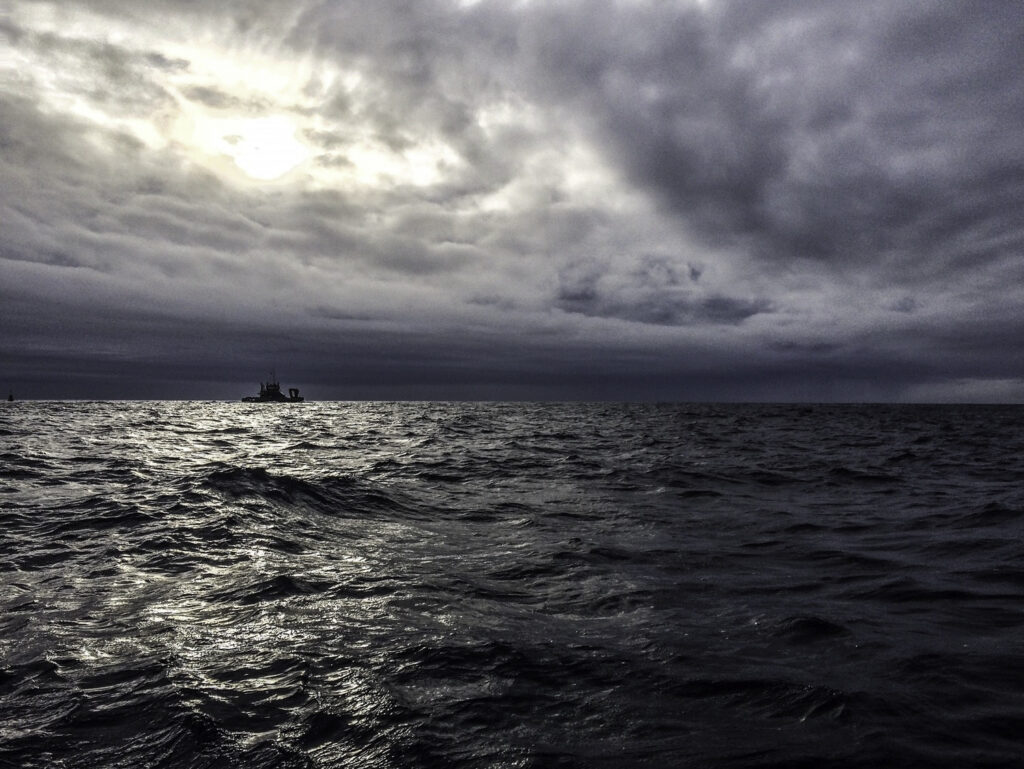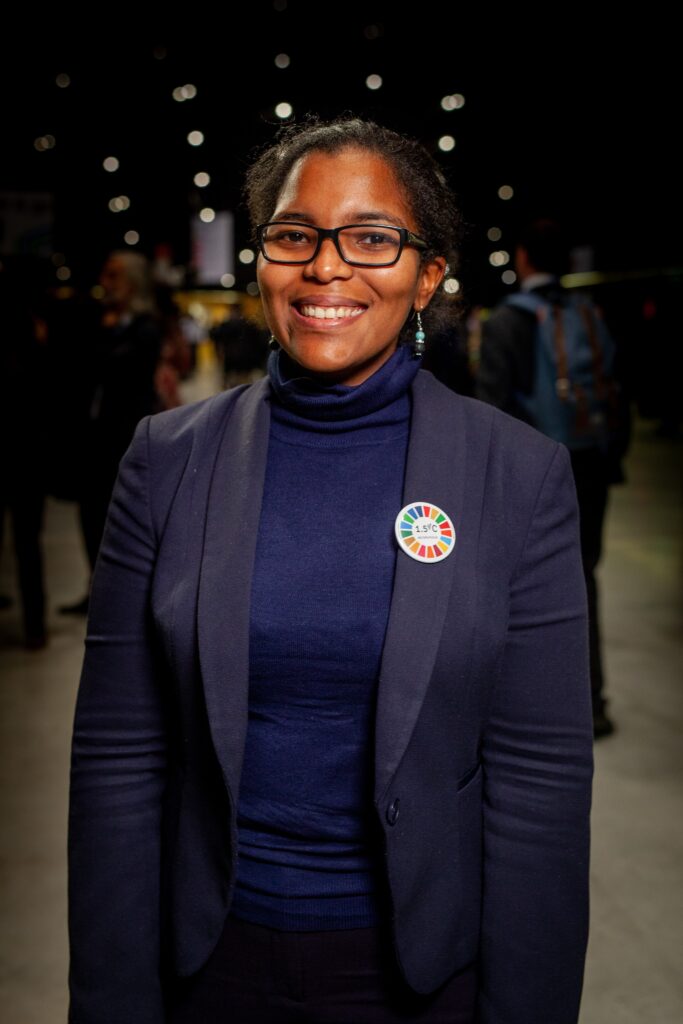Nations around the world have agreed to a High Seas Treaty to protect marine biodiversity and provide oversight of international waters.

The agreement on ‘Marine Biodiversity of Areas Beyond National Jurisdiction’ (BBNJ) provides a legal framework on the conservation and sustainable use of marine biological diversity of our ocean beyond national jurisdiction.

MBA Trustee Angelique Pouponneau Mem.MBA, first joined BBNJ negotiations in 2018 for the first Intergovernmental Conference as the legal advisor to the Seychelles Government and the African Group.
From 2021, Angelique was an advisor to the research team supporting the Alliance of Small Island States with the special circumstances of SIDS and capacity building and technology transfer.
As a legal expert in climate change, oceans and global commons, she has been advisor to the Chair of the Alliance of Small Islands States on BBNJ negotiations predominantly on special circumstances of SIDS and capacity-building and technology transfer; and finance since 2022.
Angelique shares with us her perspective on the Treaty and the potential impact on ocean conservation.
An agreement in principle – is this progress?
Late on March 4th, applause could be heard from the UN halls, as talks on the legally binding agreement on the conservation and sustainable use of marine biodiversity beyond national jurisdiction ended with an ‘agreement in principle.’ After the applause, the cheers and hugs – the question is: should we be celebrating?
Of course – yes! It has been over a decade where countries have been gathering to agree how to conserve and sustainable use of marine biodiversity in areas beyond national jurisdiction. As you can imagine, with a scan of the document and no square brackets left (a sign used to show no agreement), the halls erupted in applause. A room with mixed feelings – it was over, there was an agreement in principle or at least, a strong desire to break free from the UN walls that had been our shelter for more than 24 hours.
Yes, it is an agreement in principle. There was no adoption of the agreement on March 4th. States agreed, in principle, that no issues of substance would be reopened or changed. The session will then be resumed at another time for the formal adoption of the agreement. Before this can happen, the text has to undergo legal scrubbing and translation into six official languages. It is only then can adoption take place and for countries to take the subsequent steps for ratification and domestication, if applicable.
It is unclear when this ‘agreement in principle’ will be adopted and enter into force. This will happen after the sixtieth country ratifies or accedes to the agreement.
But beyond closing a negotiation, there are two reasons for cause for celebration.
A win for multilateralism: The world is facing challenging times as conflict and climate inaction conspire to make us question the relevance and utility of multilateralism. The developed and developing country divide also, breeds mistrust nested on unspoken historical injustices. Having countries from around the world muster the political will to reach consensus on thorny political, economic and environmental issues with the ultimate objective of sustainability reinstates faith in the multilateral process.
A win for sustainability: This is progress. The high seas were completely unregulated – well known as the ‘wild, wild wet’ – now will have some tools for the conservation and sustainable use of marine biodiversity beyond national jurisdiction. This includes environmental impact assessments for activities that could cause substantial harm to the marine environment and establishing a process for the establishment of marine protected areas beyond national jurisdiction. What does this mean? It means that marine protected areas could alleviate stressors on the ocean that are already facing many threats and if designed to respond to climate change can act as a conserving a carbon sink, among other things.
Don’t count your chickens before they hatch – Will it lead to 30 x 30?
But let’s not fool ourselves, this will not happen overnight. This is one incremental step and one constrained by the existing framework that we operate in. Let’s now take a pragmatic outlook:
The 30 x 30 campaign is an ambitious campaign to protect 30% of the global ocean by the year 2030 under fully and highly marine protected areas. This ‘agreement in principle’ provides the tools and a process to contribute to achieving this target. However, the devil is in the detail. The ‘agreement in principle’ sets out a process of application to establish a marine protected area, an inclusive consultative process, screening process whereby an application has to be accompanied by many documents including a management plan. The decision to establish the marine protected area will be undertaken by the Conference of the Parties (I.e., all the Parties to the agreement) by consensus and if consensus cannot be reached by a vote with a ¾ majority. Further the ‘agreement in principle’ also provides for countries to opt out to adhering to measures in marine protected areas for a set of limited reasons. If we have learned anything from the realm of climate change, politics often trumps science and if we are not careful, we may see this happen here. So, in short, maybe it will lead to 30 by 30 marine protection, but the likelihood is, it will take a much longer time than the next 7 years.
What about enforcement?
If we have learned anything about marine protected areas within national jurisdiction, designating marine protected areas does not mean effective protection. The question then is, how are we going to enforce all the measures that we put in place. How will we even know what is going on so far away from our shores? The current regime for enforcement of the law of the sea is based on flag state responsibility and port state responsibility whereby it is expected that first, countries create the offences under national laws and second, that if there is a violation that they will prosecute. Flag state responsibility has been heavily criticized as vessels opt for flags with countries that have lighter or no regulations and the willingness to prosecute is often not there as the courts are already inundated with cases and backlog. Technology, using satellites, will have to play a pivotal role and perhaps, even evidence laws in national jurisdictions will have to be amended to cater for these new cases.
Who will pay?
Many countries who have established marine protected areas in national jurisdiction have struggled to raise the funding required for effective protection. With the vast distances and expanse of waters, there is a question of who will pay for the associated costs of protection. For example, it is expected that there will be a management plan then who will do the monitoring? Who will pay for the technology that will be required?
How can we ensure equity?
But this was not only a treaty about saving the ocean, issues of equity, effective participation and benefit-sharing weaved through the conversation. Like most international law, there is the creation of obligations, but this is worrisome for countries who do not have the capacity nor technology to meet these obligations. Without this, it is unlikely that all States will be in a position to effectively participate in this ‘agreement in principle.’ One of the four elements of the package was, therefore, capacity-building and technology transfer. The text is somewhat robust but does not challenge the status quo and address the current accessibility issues that many countries face. ‘Donor’ countries are willing to only provide funding to countries eligible for funding under the budget allocation for overseas development assistance. As many countries move out of the ‘least developed country’ categorization they are no longer eligible for funding under the ODA envelope nor access to concessional funding and therefore, most countries may not see the equitable benefit, unless the multilateral special fund seeks to close that gap. In any case, who will be tracking and keeping us accountable to our legal obligations under this Part, noting that many of the obligations here duplicate what was already agreed in the United Nations Convention on the Law of the Sea back in the 1980s.
Next, is the question of access and benefit sharing. This is a matter of ethos and principle. If something is taken from a place that belongs to all of us, who should benefit from its commercialization? On one hand, some countries felt it is those who make the effort to go out there, do the science, create the product, and move it to market should be incentivized to do so by enjoying most of the benefits but we know that most countries do not have the capacity to do that. So, on the other hand, other countries felt that if it is taken from the high seas, benefits should be returned to all of us. The ‘agreement in principle’ creates some flexibility by leaving options open and for next steps to be guided by an access and benefit-sharing committee.
What does this mean for the future of science and academic and research institutions?
Academic and research institutions are part of the ecosystem for capacity-building and technology development. It is expected that there will be significant investments going into academic and research institutions with interests in topics that will support decision-making on the high seas. However, institutions from the Global South will be keeping an eye out on whether only institutions in the Global North will be benefiting from these investments and be the ones generating knowledge with a few PhDs annually for students from the Global South as a token towards inclusion. Funders and investors will have a key role to play when they set the parameters of their investments but if academic and research institutions are to remain relevant, legitimate and avant-garde, it may be prudent to start to look for collaborations further afield. The Alliance of Small Island States recently issued a Declaration on guiding principles on collaboration on marine science and technology transfer with small island developing states.
Science has a pivotal role to play in the success of this agreement. However, because scientific decisions will be taken in a political context, the results will not be examined unless countries are satisfied that it was carried out by the right team and in the right way. There will be a growing demand for ‘inclusive science,’ that is to say, where there is a strong push away from ‘parachute science,’ the equal treatment of traditional knowledge of Indigenous Peoples and local communities and representation of scientists from developing countries on teams. Hence, if science is to influence decision-making, it will have to take these into consideration.
In short, this is progress. Is it revolutionary? Probably not. Is it incremental progress that has enough to help us build our way to a healthy environment? It’s definitely a step in the right direction.
Should we feel content? No! There is much work to be done. So now that the cheers have died down – read the ‘agreement in principle,’ keep an eye out on the date for adoption, cross your fingers that it all goes smoothly, and then think about your role in the uphill struggle that is to come!